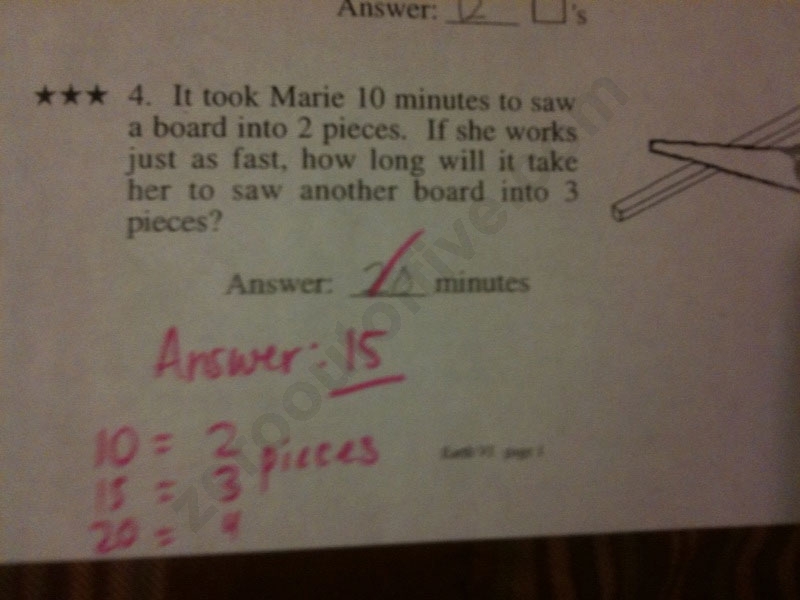 I spend 2 days a week working for the math department at a local high school. One day, I was working with a student who was using the equation for a falling object, h=16t^2, and she was calculating the time for a rock to fall off a very tall building. The student used her calculator and the answer was 884 seconds. Hmmm. I asked her if she was certain of her answer. She pointed to the calculator, and there’s the number. Calculators are never wrong.
I spend 2 days a week working for the math department at a local high school. One day, I was working with a student who was using the equation for a falling object, h=16t^2, and she was calculating the time for a rock to fall off a very tall building. The student used her calculator and the answer was 884 seconds. Hmmm. I asked her if she was certain of her answer. She pointed to the calculator, and there’s the number. Calculators are never wrong.
I asked, “how many seconds in a minute?” 60, of course. How many 60s in 884? No calculator, just round it, 60 into 900 is 6 into 90, or 15. 15 minutes. It hadn’t sunk in yet. So I keep pushing. “You see your friend wave, at the top of the Empire State Building. She drops a baseball. You go into a Starbucks, buy a coffee, stop in the restroom, and come back 14 minutes later, to see the baseball still falling? She responded, “Ok, now you’re making fun of me.” Perhaps, but at the moment for me was the disconnect between the word problem and the numbers. I think there’s a skill worth teaching, estimating the expected answer in a way that would help prevent such gross errors. The correct answer was 8.84 seconds for a 1250 ft tall building. I’d hope a student would be able to take a moment and say she expects a range between say, 5 and 15 seconds.
 I’ve seen a few instances where instead of writing “you’ll use 1/4 the amount” the ad states “4 times less.” This practice may be getting more common, but it’s bad math and ambiguous English. Say, for example, I have 4 slices of pizza. You have one. When using addition or subtraction for a comparison, I have 3 more slices than you, and surly, you have 3 fewer. Multiplying doesn’t work the same, I have 4 times the pizza you do, and you have one fourth as many as I. To say you have four times fewer makes no sense.
I’ve seen a few instances where instead of writing “you’ll use 1/4 the amount” the ad states “4 times less.” This practice may be getting more common, but it’s bad math and ambiguous English. Say, for example, I have 4 slices of pizza. You have one. When using addition or subtraction for a comparison, I have 3 more slices than you, and surly, you have 3 fewer. Multiplying doesn’t work the same, I have 4 times the pizza you do, and you have one fourth as many as I. To say you have four times fewer makes no sense. I saw this online a couple years ago, and saved the image. It was posted on Stack Exchange as
I saw this online a couple years ago, and saved the image. It was posted on Stack Exchange as
 I spend 2 days a week working for the math department at a local high school. One day, I was working with a student who was using the equation for a falling object, h=16t^2, and she was calculating the time for a rock to fall off a very tall building. The student used her calculator and the answer was 884 seconds. Hmmm. I asked her if she was certain of her answer. She pointed to the calculator, and there’s the number. Calculators are never wrong.
I spend 2 days a week working for the math department at a local high school. One day, I was working with a student who was using the equation for a falling object, h=16t^2, and she was calculating the time for a rock to fall off a very tall building. The student used her calculator and the answer was 884 seconds. Hmmm. I asked her if she was certain of her answer. She pointed to the calculator, and there’s the number. Calculators are never wrong.